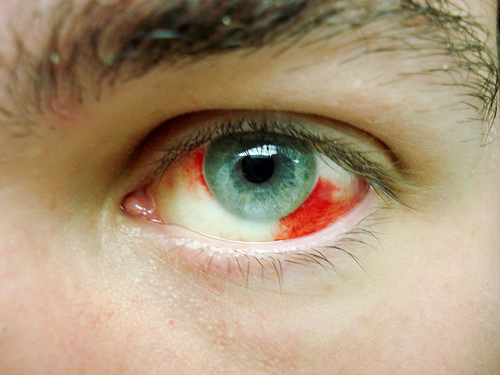
Most of the time no symptoms accompany subconjunctival hemorrhages. Many people become alarmed by the sudden onset of this common problem, even though it is not associated with any diseases that cause vision loss. The hemorrhage tends to fade over the following two to three weeks and clears last in the area next to the colored part of the eye, (iris).
The most common cause of subconjunctival is simple rubbing of the eyes. Rubbing mechanically distorts the conjunctiva, bursting open one of the small blood vessels. Raising the pressure inside the conjunctival veins by lifting heavy objects, coughing or sneezing can also cause a hemorrhage. Most of the time an obvious cause is not found. Only rarely is the condition ever associated with high blood pressure or other bleeding problems.
NO TREATMENT is needed. Subconjunctival hemorrhages will go away on their own within 2-3 weeks.



